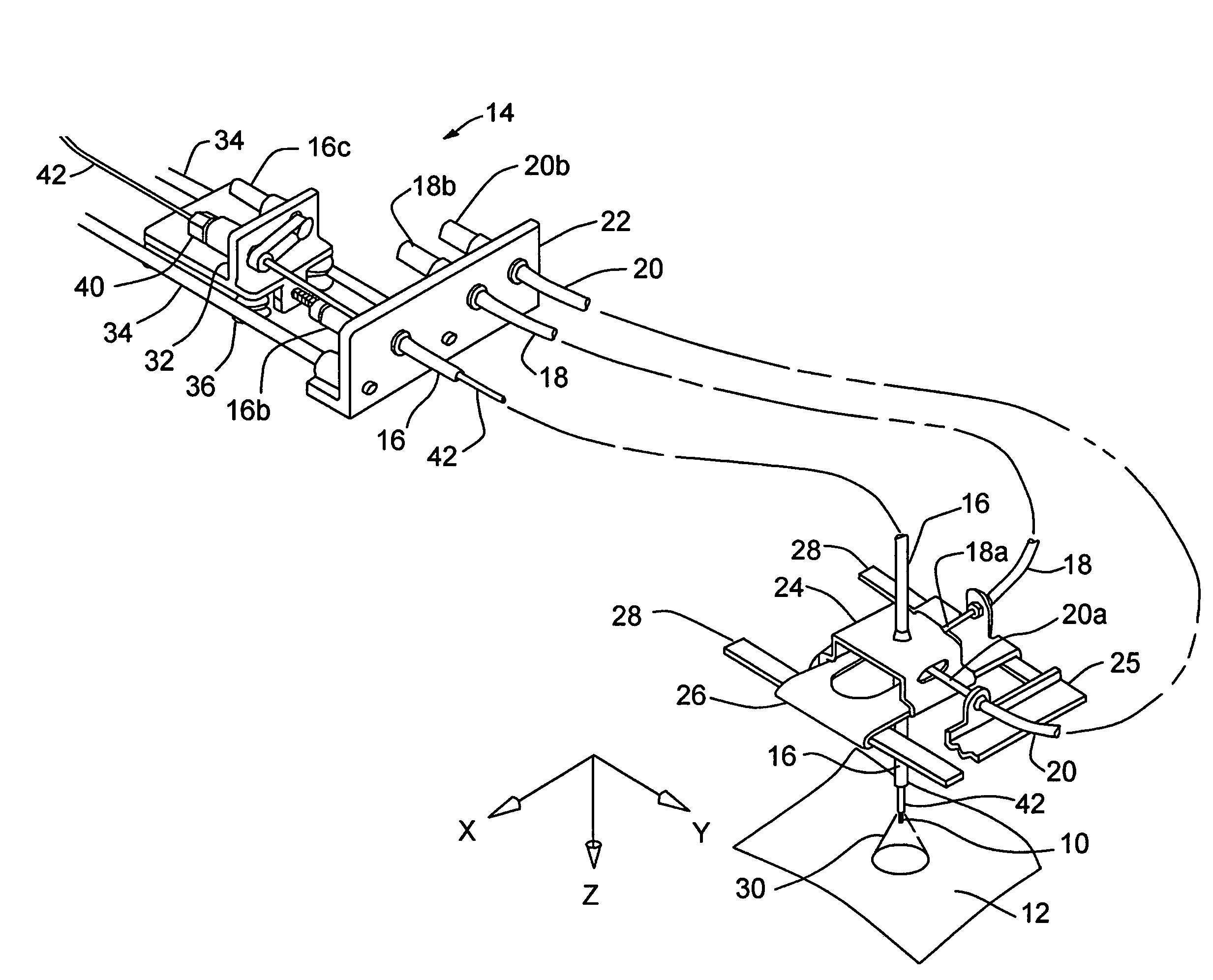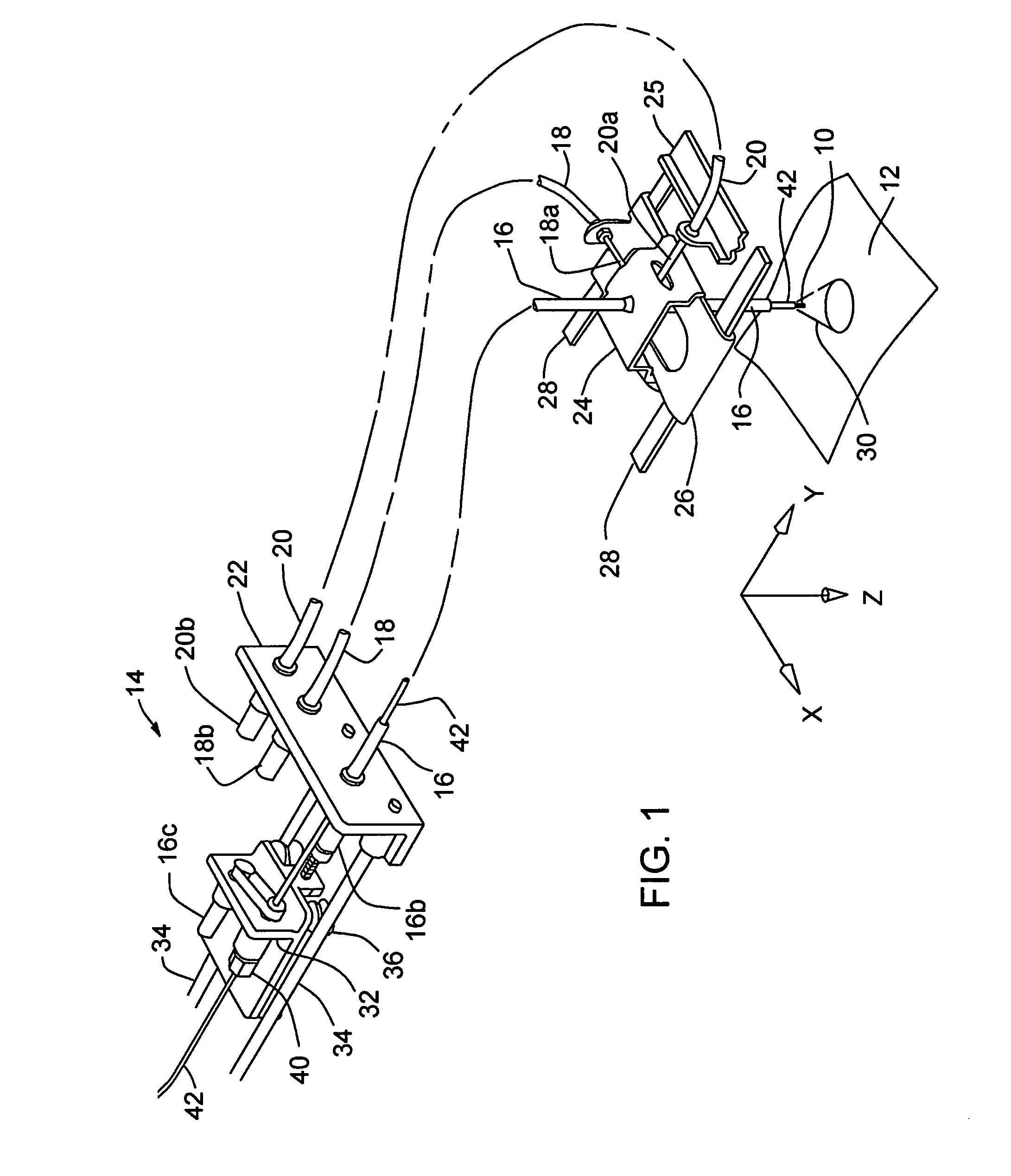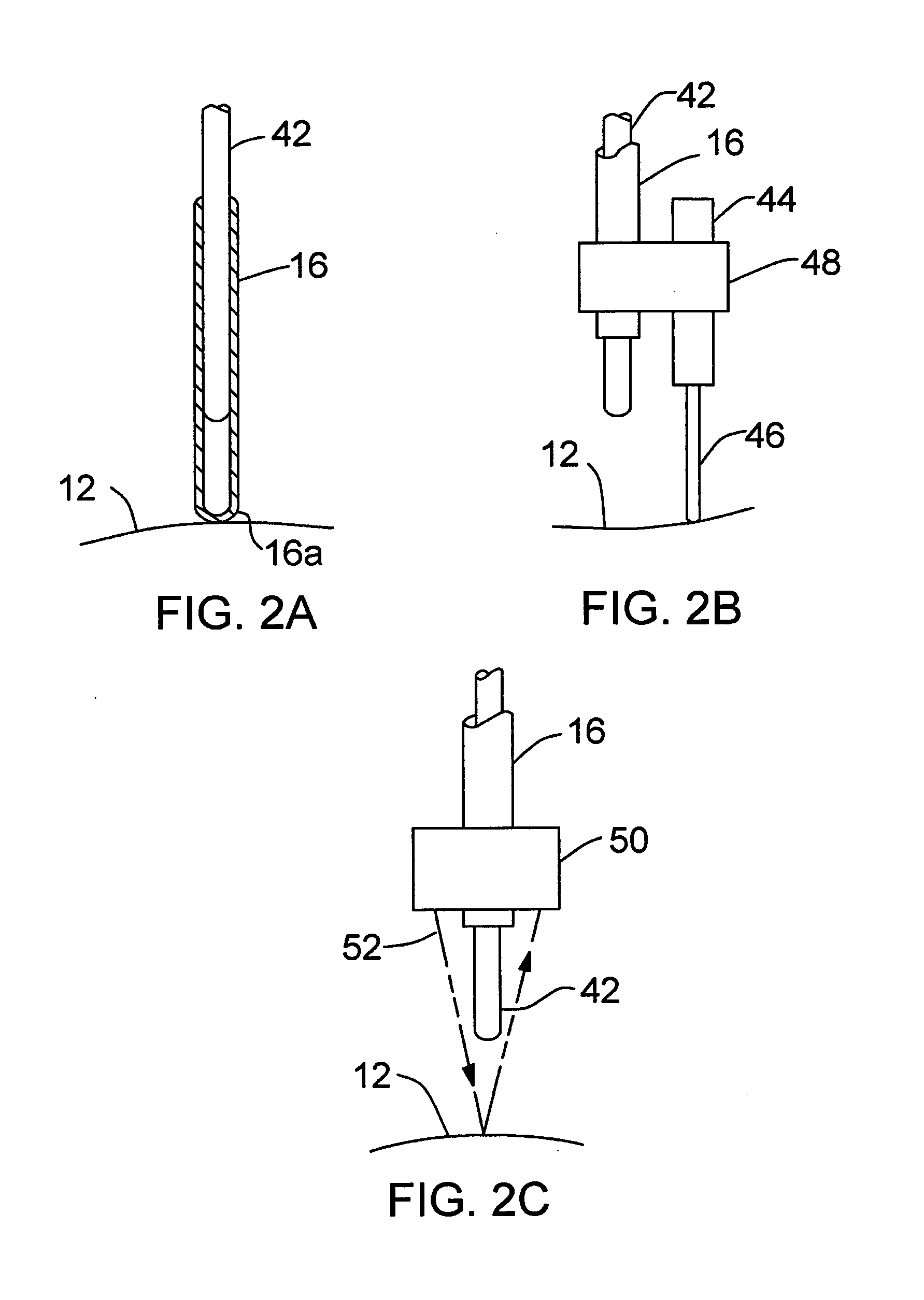Apparatus and methods for radiation treatment of tissue surfaces
a tissue surface and apparatus technology, applied in the field of tissue surface radiation therapy, can solve the problems of limited conformity, external beam sources, limited radiation dose uniformity, etc., and achieve the effects of increasing treatment efficiency, reducing radiation dose, and increasing spacing
- Summary
- Abstract
- Description
- Claims
- Application Information
AI Technical Summary
Benefits of technology
Problems solved by technology
Method used
Image
Examples
Embodiment Construction
[0030]Each case where radiotherapy of a surface area is indicated first involves planning. The area to be treated needs to be identified, and a prescription specified by a radiation oncologist. The prescription may involve local dose variations depending on the uniformity of the disease, its progression or extent as presented.
[0031]Planning also requires characterization of the source to be used, measured so as to include any attenuating effects from collateral apparatus which will be positioned within the emission pattern during the treatment to be performed. This characterization information is fed into the planning program for use in development of the treatment plan which in turn will later be used in establishing apparatus control parameters for the therapy.
[0032]With a prescription established and the source properly characterized and with both input into the treatment planning system, determination of a rastering treatment protocol, including proper control of apparatus param...
PUM
 Login to View More
Login to View More Abstract
Description
Claims
Application Information
 Login to View More
Login to View More - R&D
- Intellectual Property
- Life Sciences
- Materials
- Tech Scout
- Unparalleled Data Quality
- Higher Quality Content
- 60% Fewer Hallucinations
Browse by: Latest US Patents, China's latest patents, Technical Efficacy Thesaurus, Application Domain, Technology Topic, Popular Technical Reports.
© 2025 PatSnap. All rights reserved.Legal|Privacy policy|Modern Slavery Act Transparency Statement|Sitemap|About US| Contact US: help@patsnap.com



